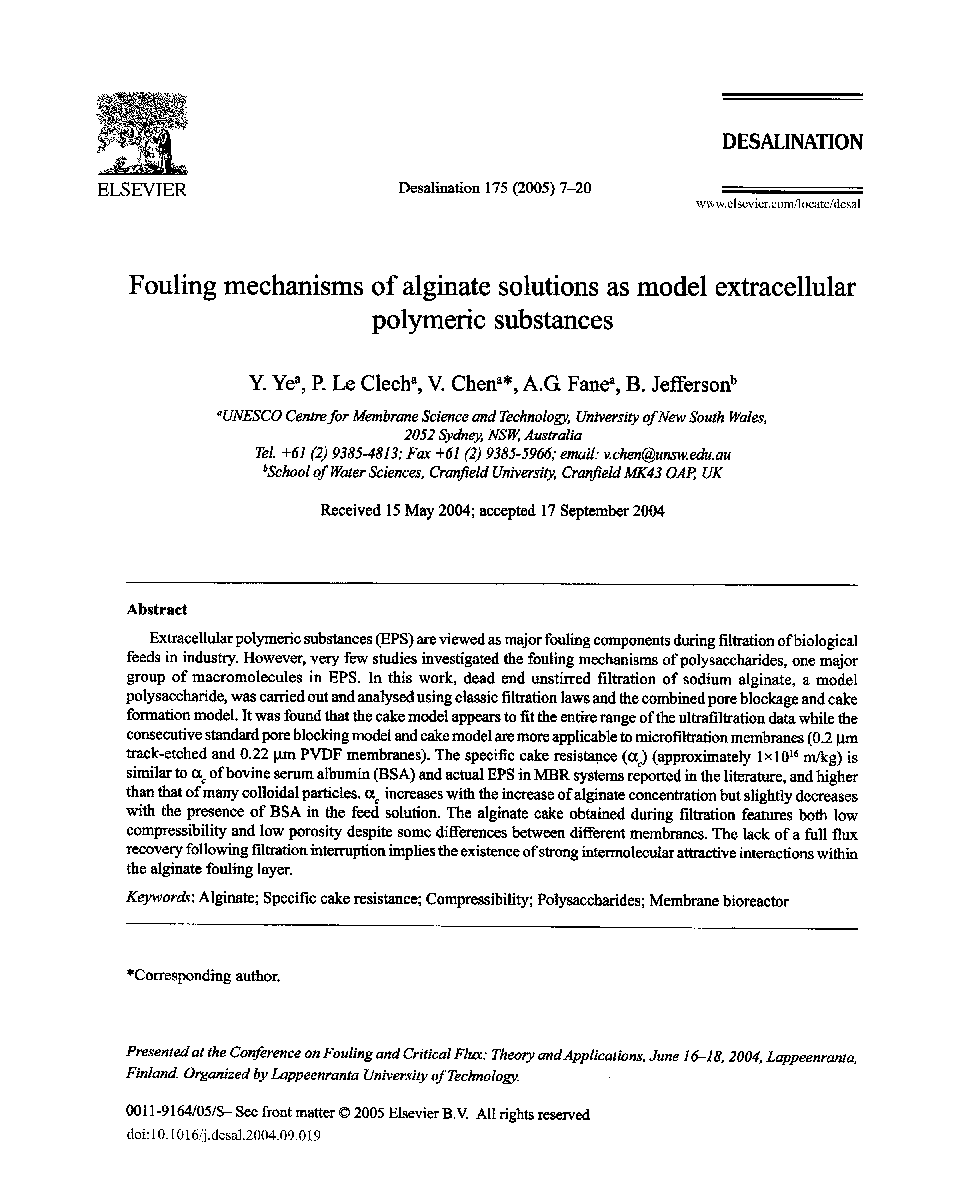| Article ID | Journal | Published Year | Pages | File Type |
|---|---|---|---|---|
| 10386330 | Desalination | 2005 | 14 Pages |
Abstract
Extracellular polymeric substances (EPS) are viewed as major fouling components during filtration of biological feeds in industry. However, very few studies investigated the fouling mechanisms of polysaccharides, one major group of macromolecules in EPS. In this work, dead end unstirred filtration of sodium alginate, a model polysaccharide, was carried out and analysed using classic filtration laws and the combined pore blockage and cake formation model. It was found that the cake model appears to fit the entire range of the ultrafiltration data while the consecutive standard pore blocking model and cake model are more applicable to microfiltration membranes (0.2 m track-etched and 0.22 m PVDF membranes). The specific cake resistance (αc) (approximately 1Ã1016 m/kg) is similar to αc of bovine serum albumin (BSA) and actual EPS in MBR systems reported in the literature, and higher than that of many colloidal particles. αc increases with the increase of alginate concentration but slightly decreases with the presence of BSA in the feed solution. The alginate cake obtained during filtration features both low compressibility and low porosity despite some differences between different membranes. The lack of a full flux recovery following filtration interruption implies the existence of strong intermolecular attractive interactions within the alginate fouling layer.
Related Topics
Physical Sciences and Engineering
Chemical Engineering
Filtration and Separation
Authors
Y. Ye, P. Le Clech, V. Chen, A.G. Fane, B. Jefferson,
